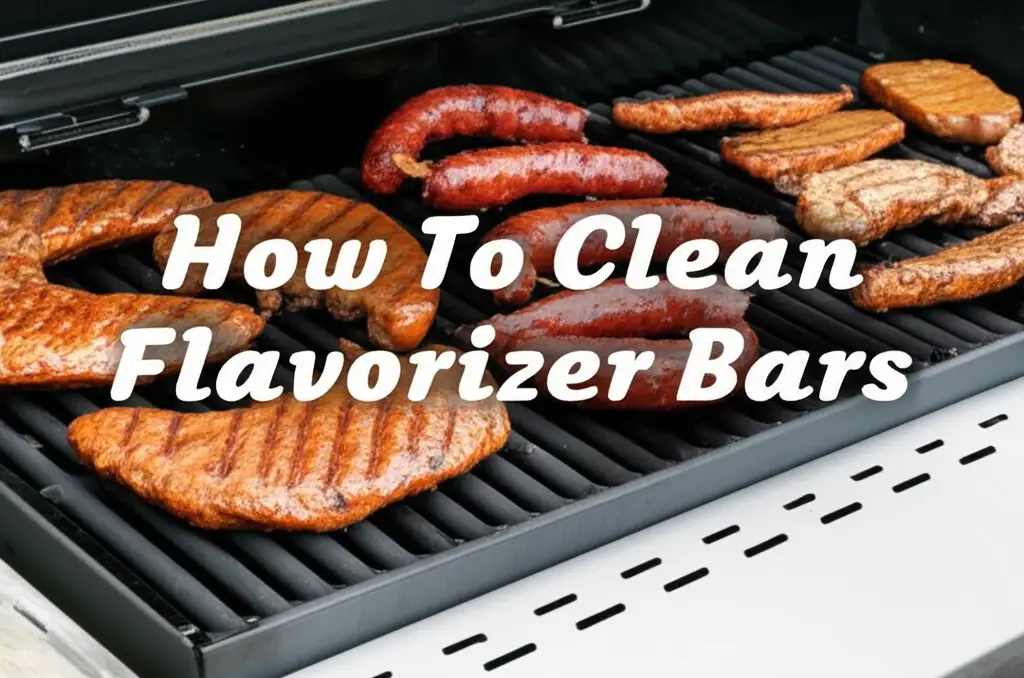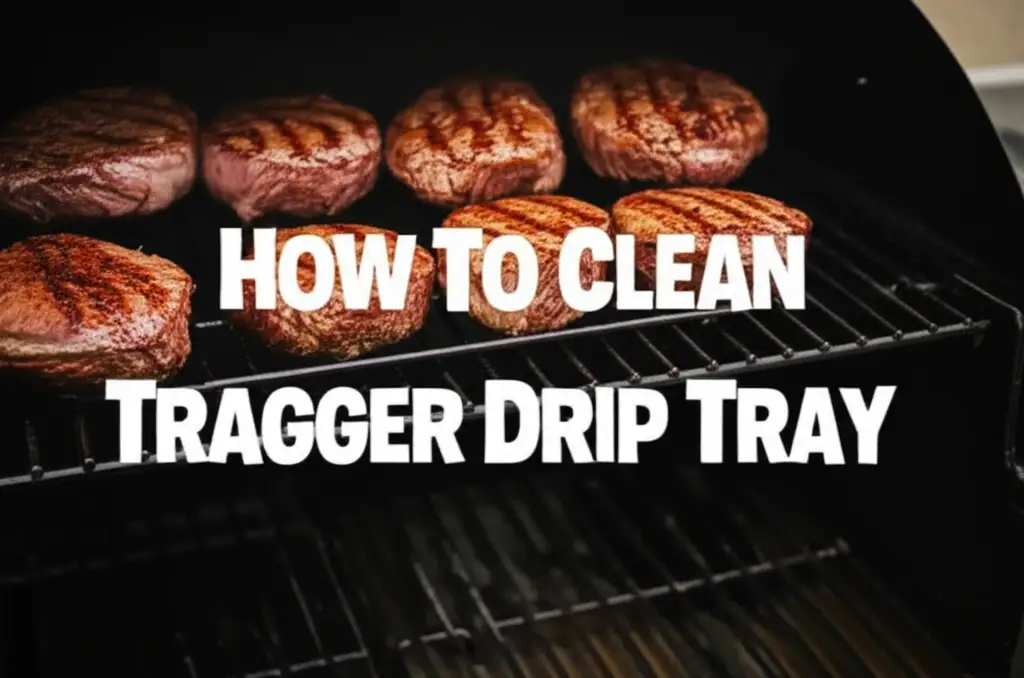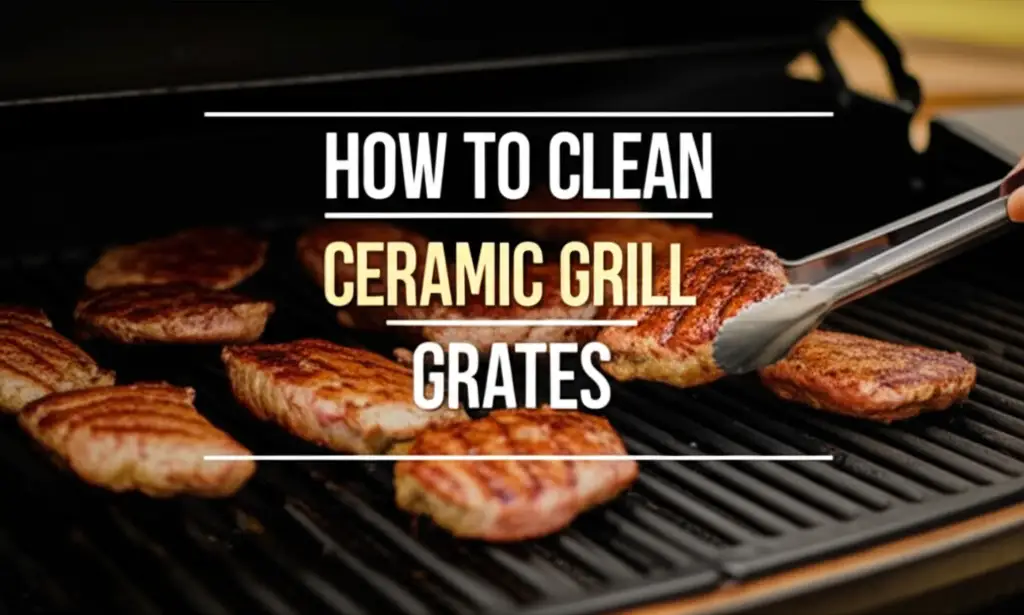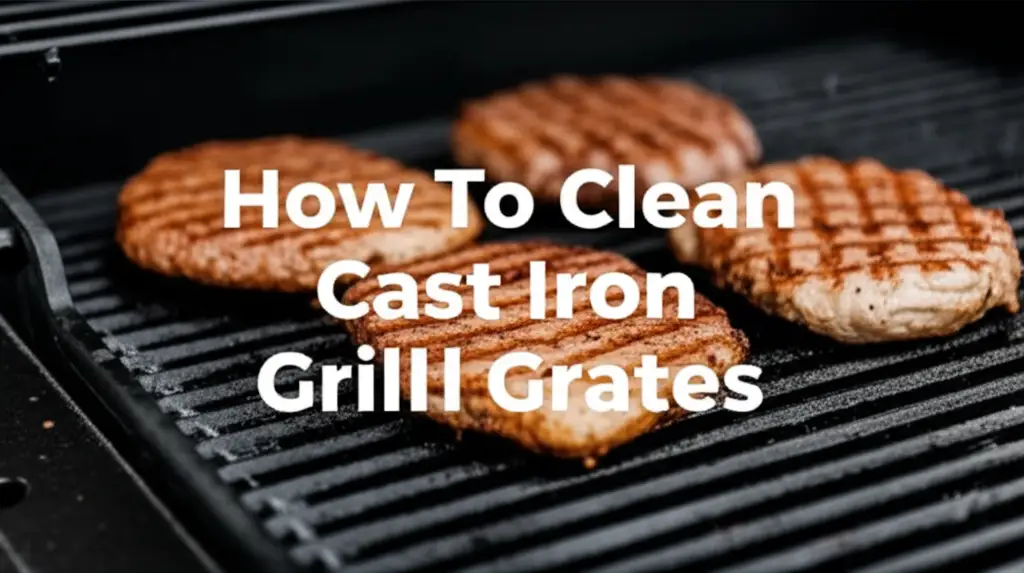· Grill Maintenance · 11 min read
How To Clean Mold Off Grill
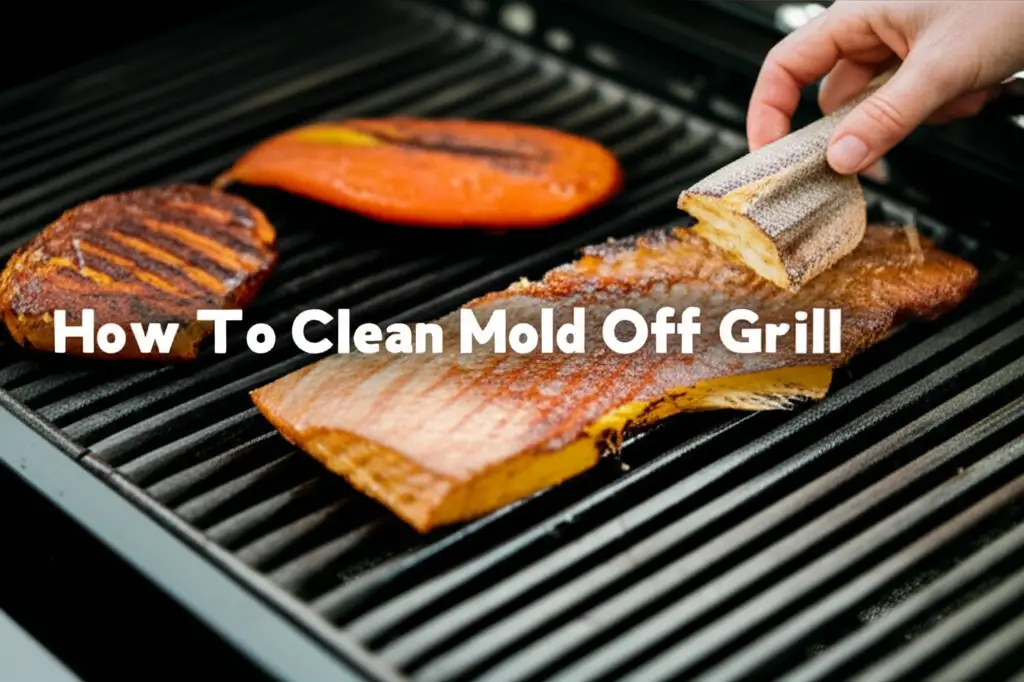
Clean Mold Off Your Grill: A Simple Guide
Ever opened your grill lid to find an unwelcome fuzzy guest? Mold on a grill is a common, yet unsettling, discovery for many backyard chefs. You see black or green spots, and immediately wonder: “How do I clean mold off grill surfaces safely?” This article gives you straightforward steps to tackle this issue. We will cover why mold grows, how to prepare for cleaning, and the best methods to remove it. You will learn about safe cleaning agents and how to keep your grill mold-free for good.
Takeaway
- Identify grill mold signs and understand its causes.
- Prioritize safety by wearing protective gear and disconnecting gas.
- Use natural solutions like vinegar or baking soda for effective cleaning.
- Clean all grill components thoroughly, including grates, interior, and burners.
- Prevent future mold growth with proper storage and regular maintenance.
To effectively clean mold off a grill, first disconnect the gas and let the grill cool. Scrape off loose mold, then apply a solution of white vinegar or a paste of baking soda and water. Scrub thoroughly with a stiff brush, rinse well, and dry completely to prevent recurrence.
Why Mold Grows on Your Grill and How to Identify It
Mold loves specific conditions. Your grill can often provide them. Mold thrives in dark, damp environments with a food source. After you finish cooking, food particles can remain on grates and inside the grill body. If the grill cools down and stays closed, moisture gets trapped. This creates a perfect breeding ground for mold spores. High humidity or storing your grill in a damp area also contributes.
You can usually spot mold as fuzzy patches. It might appear green, black, or even white. Sometimes, it looks like a dusty or powdery film. A musty smell also indicates its presence. It often starts on the grates, but can spread to the lid interior and cooking box. Recognizing these signs early helps you act fast.
Mold spores are everywhere in the air. They settle on surfaces when conditions are right. Cooking residue offers a food source. Lack of airflow helps mold grow quickly. An unused grill provides a dark, humid spot. This combination often leads to mold problems.
Safety First: Essential Preparations Before You Clean
Before you start cleaning, safety is important. Mold can cause respiratory issues, so protect yourself. Always work in a well-ventilated area. Open the grill lid fully. This allows fresh air to circulate.
Wear appropriate protective gear. A pair of rubber gloves protects your hands from mold and cleaning solutions. A dust mask or respirator prevents you from inhaling mold spores. Goggles shield your eyes from splashes and airborne particles.
Disconnect your grill from its fuel source. For gas grills, turn off the gas tank valve and disconnect the hose. For charcoal grills, ensure all coals are cold and removed. Let the grill cool down completely if you just used it. Safety comes before everything else in this process.
Taking these steps ensures a safe cleaning experience. You protect yourself from health risks. You also prevent accidents with the grill itself. Do not skip these crucial preparation steps.
Gathering Your Tools: What You Need to Clean Grill Mold
Having the right tools makes cleaning mold much easier. You do not need fancy equipment. Most items are likely already in your home. Gather these before you begin.
You will need a stiff-bristled grill brush or a sturdy wire brush. This helps scrub away stubborn mold. If you do not have a grill brush, you can use other items. Learn how to clean grill without brush. Sponges, rags, and paper towels are also useful for wiping. You will need a large bucket or spray bottle for cleaning solutions.
For cleaning agents, white vinegar is a powerful natural option. Baking soda creates an effective abrasive paste. Dish soap helps cut through grease and grime. Warm water is essential for rinsing. A trash bag helps contain removed mold and debris. Having these items ready saves time.
You might also consider a plastic scraper for tough spots. For cast iron grates, specific care applies. You can read about how to clean cast iron grill grates for more details. Having your supplies organized ensures a smooth cleaning process.
Step-by-Step Guide: Cleaning Mold Off Grill Grates and Interior
Cleaning mold from your grill requires a systematic approach. Follow these steps for thorough removal. This ensures your grill becomes safe for cooking again. It also helps prevent future mold growth.
First, remove all grill grates and heat deflectors. You want to clean these separately. Use a stiff wire brush or scraper to remove loose mold and food particles. Scrape as much as possible into a trash bag. This keeps mold spores from spreading.
Next, prepare your cleaning solution. For a natural option, mix equal parts white vinegar and water in a spray bottle. Spray this solution generously onto all moldy surfaces. This includes grates, the inside of the lid, and the cooking box. Let it sit for 10-15 minutes. Vinegar is excellent for killing mold spores. You can discover more about how to clean mold with vinegar.
After soaking, scrub all surfaces vigorously. Use your grill brush on the grates. For other areas, a stiff sponge or a non-abrasive scrubber works well. Pay attention to corners and crevices where mold might hide. If mold is very stubborn, make a paste of baking soda and a little water. Apply it to affected areas, let it sit, then scrub.
Rinse all cleaned parts thoroughly with warm water. Ensure no cleaning solution or mold residue remains. You can use a hose for grates and rinse the interior with a wet sponge. After rinsing, dry everything completely. Use clean rags or paper towels. You can also let parts air dry in the sun. This step is critical to prevent new mold growth.
Natural Solutions for Mold Removal: Vinegar, Baking Soda, and More
Natural cleaning solutions are safe and effective for grill mold. They avoid harsh chemicals. These options are readily available in most homes. They break down mold and clean surfaces well.
White vinegar is a powerful mold killer. Its acetic acid content destroys mold spores. Mix equal parts white vinegar and water in a spray bottle. Spray the solution directly onto moldy areas. Let it soak for 10-15 minutes before scrubbing. This allows the vinegar to penetrate and kill the mold.
Baking soda is another great natural cleaner. It is abrasive, which helps scrub off mold. Baking soda also deodorizes, removing musty smells. Make a paste by mixing baking soda with a small amount of water. Apply the paste to moldy spots. Let it sit for a few minutes, then scrub with a brush. This paste effectively lifts mold and grime.
Lemon juice can also help with light mold. Its acidic nature provides some mold-killing power. You can mix it with salt to create an abrasive scrub. However, vinegar and baking soda are generally stronger for mold. For very tough mold situations, you might consider stronger options. Bleach, for example, is effective but requires careful handling. Learn about how to clean mold with bleach if you consider this option, always prioritizing safety.
These natural methods work well for most grill mold issues. They are food-safe once rinsed properly. Always rinse thoroughly after using any cleaning agent. This ensures no residue remains on your cooking surfaces.
Deep Cleaning Different Grill Components
Mold can affect various parts of your grill. Cleaning each component properly ensures a completely mold-free grill. This also improves overall grill performance and safety.
Start with the grill grates. These are usually the first place mold appears. After scrubbing and rinsing them, make sure they dry completely. For cast iron grates, re-season them after cleaning and drying. This protects them from rust and mold. Sometimes, you can use simpler methods too. Read about how to clean grill grates with aluminum foil for an alternative.
Next, focus on the interior of the grill body. This includes the lid, side walls, and bottom. Scrape any debris and mold into a tray or paper. Then, spray with your chosen cleaning solution. Scrub all interior surfaces thoroughly. Pay attention to the corners and seams. Rinse well and wipe dry.
Don’t forget the heat deflectors or flavorizer bars. These often collect grease and food particles, which can harbor mold. Remove them and clean them individually. Scrape off any gunk. Wash them with warm soapy water or your vinegar solution. Rinse and dry completely.
Finally, clean the burners on gas grills. While mold is less common directly on burners, grease build-up can affect their performance. You can find detailed instructions on how to clean burners on gas grill. Ensure burner ports are clear of debris. Also, empty and clean the drip pan. This pan collects grease and can become moldy if left uncleaned.
Cleaning the exterior of your grill is also important. While mold is less likely here, dirt and grime accumulate. You can learn how to clean outside of black grill for specific tips. A clean exterior adds to your grill’s longevity.
Preventing Future Mold Growth: Best Practices for Grill Storage
Preventing mold is easier than cleaning it. Good grill maintenance saves you time and effort. A few simple habits keep your grill mold-free. This ensures it is always ready for your next barbecue.
Always clean your grill after each use. Scrape off food residue from the grates. For a quick clean, you can even use an onion for scrubbing. Check out how to clean grill with onion for this method. Wipe down interior surfaces. This removes the food source that mold needs. A clean grill is less attractive to mold spores.
Ensure your grill is completely dry before covering it or storing it. Moisture is the biggest cause of mold. After cleaning or cooking, leave the lid open for an hour or two. This allows any residual moisture to evaporate. If it has rained, dry the grill thoroughly before covering. A dry environment prevents mold spores from activating.
Store your grill in a dry, well-ventilated area. Avoid damp basements or sheds. If you use a grill cover, choose one that breathes. Some covers trap moisture inside, creating a humid environment. Look for covers with vents. These vents allow air circulation while protecting from rain and dust.
Regularly check your grill for signs of moisture or mold. A quick peek every few weeks helps catch problems early. If you notice any condensation, wipe it dry. Taking these preventive measures makes a big difference. They ensure your grill remains a clean and safe cooking appliance.
FAQ Section
Is mold on a grill dangerous? Yes, mold on a grill can be dangerous. It produces toxins that can be harmful if ingested. Inhaling mold spores during cleaning can also cause respiratory irritation or allergic reactions. Always remove mold thoroughly before cooking. Do not try to cook off the mold.
Can I just burn off mold on my grill? No, you should not just burn off mold on your grill. While high heat might kill some mold, it does not remove the mold toxins. These toxins can remain on the grill surfaces and transfer to your food. Always physically clean and remove all mold.
How often should I clean my grill to prevent mold? You should clean your grill grates after every use. A more thorough deep clean of the interior and other components is good to do every few months or before long storage periods. This regular maintenance helps prevent mold from taking hold.
What causes mold to grow on my grill? Mold grows on grills primarily due to moisture, darkness, and food residue. If your grill is stored in a damp area, left with food particles, and covered without proper drying, it creates an ideal environment for mold spores to thrive. Lack of airflow also contributes.
Can I use bleach to clean mold off my grill? You can use bleach, but with extreme caution and only on non-food contact surfaces if necessary. Bleach is very effective at killing mold. However, it requires thorough rinsing to ensure no chemical residue remains, which could contaminate food. Vinegar is a safer option for food-contact surfaces.
Does a grill cover prevent mold? A grill cover protects your grill from rain and dust. However, some covers can trap moisture inside. This creates a humid environment perfect for mold. Choose a breathable cover with vents. Always ensure your grill is completely dry before covering it.
Conclusion
Finding mold on your grill is unpleasant, but it is a problem with a clear solution. We have walked through the steps needed to effectively clean mold off your grill, from understanding its causes to choosing the right tools and cleaning agents. Remember to prioritize safety by wearing protective gear. Using natural solutions like vinegar and baking soda offers an effective and safer way to clean.
Beyond cleaning, prevention is key. Regular cleaning after each use, ensuring the grill is completely dry before storage, and providing good ventilation will stop mold in its tracks. A clean grill means safe, delicious food and a more enjoyable grilling experience. By following these guidelines, you ensure your grill stays pristine and ready for many more flavorful cookouts. Happy grilling!
- grill cleaning
- mold removal
- barbecue maintenance
- food safety
- outdoor cooking

